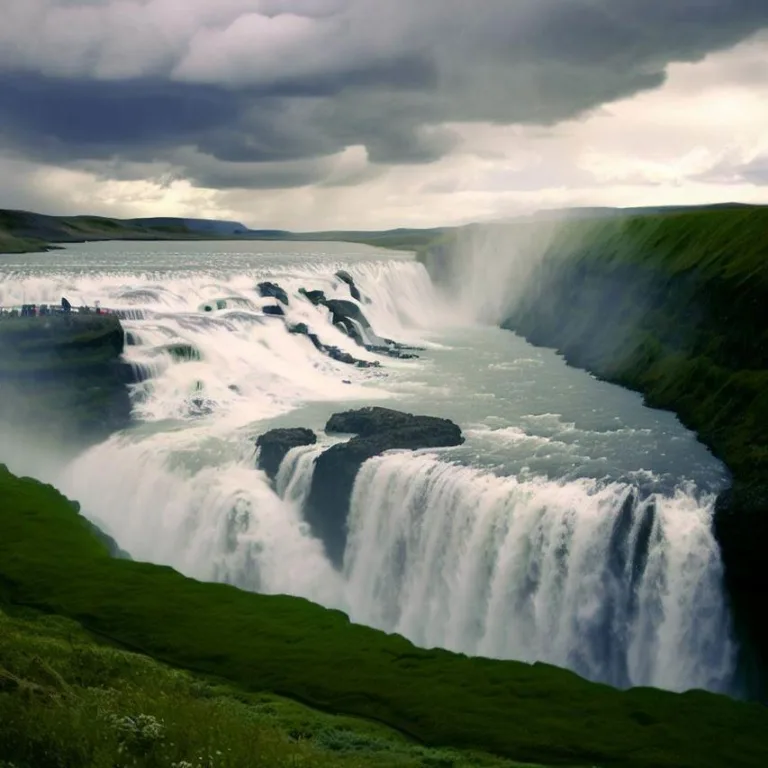Welcome to our comprehensive guide on Gullfoss, the mesmerizing waterfall that stands as a true gem in Iceland’s stunning landscape. This natural wonder has captured the hearts of travelers and nature enthusiasts from around the world. In this article, we will delve into the captivating features of Gullfoss, its rich history, and the reasons why it continues to be a must-visit destination for all who venture to Iceland.
The magnificence of gullfoss
Gullfoss, often referred to as the „Golden Falls,“ is a two-tiered waterfall located in the southwestern part of Iceland. Its awe-inspiring beauty lies in its sheer power and the breathtaking spectacle it offers to those who witness its cascading waters. The waterfall is situated on the Hvítá River, which originates from the Langjökull glacier.
The upper tier of Gullfoss drops approximately 11 meters, while the lower tier plummets dramatically into a deep crevice, descending another 21 meters. The sheer force of the water, the mist that fills the air, and the vivid rainbows that often grace the surroundings make Gullfoss an otherworldly experience.
A historical icon
Gullfoss not only captivates with its natural beauty but also holds significant historical value. The waterfall was at the center of a conservation battle in the early 20th century, spearheaded by Sigríður Tómasdóttir, a determined Icelandic woman who fought fiercely to protect Gullfoss from potential hydroelectric development.
Through her unwavering dedication and determination, Sigríður managed to preserve Gullfoss for generations to come. Her legacy lives on in the form of this protected natural wonder, serving as a testament to the power of one person’s commitment to safeguarding the environment.
Exploring the surroundings
While Gullfoss is undeniably the star of the show, the surrounding area offers even more to explore. The iconic Geysir geothermal area, known for its erupting hot springs, is in close proximity. Visitors can witness the Strokkur geyser shooting water high into the air at regular intervals, creating a captivating display of nature’s power.
Additionally, the Þingvellir National Park, a UNESCO World Heritage Site, is nearby. This historical and geological wonderland is where the North American and Eurasian tectonic plates meet, resulting in dramatic fissures and unique landscapes.
Frequently asked questions
Q: How do I get to Gullfoss?
A: Gullfoss is easily accessible from Reykjavik, the capital of Iceland. The route to Gullfoss is well-marked, and guided tours are also available for those who prefer organized travel.
Q: Is Gullfoss safe to visit year-round?
A: Gullfoss is accessible throughout the year, but weather conditions can vary greatly. It’s recommended to check the weather forecast and road conditions before embarking on your journey.
Q: Can I go near the waterfall?
A: Yes, there are designated viewing platforms that allow visitors to get relatively close to the waterfall. However, it’s important to follow safety guidelines and respect the natural surroundings.
Q: Are there any facilities at Gullfoss?
A: Yes, Gullfoss has a visitor center with amenities such as restrooms, a café, and a souvenir shop. It’s a convenient stop for travelers to learn more about the waterfall’s history and significance.
As you plan your visit to Iceland, make sure to include Gullfoss on your itinerary. Its unparalleled beauty, historical significance, and the surrounding natural wonders make it an experience that will stay with you forever.
Viz také:






